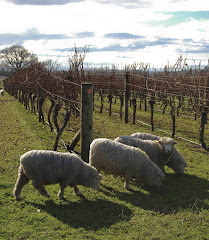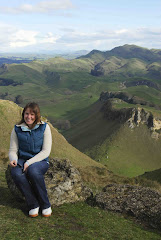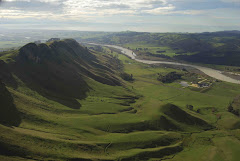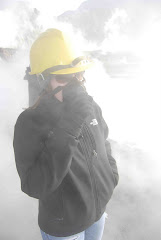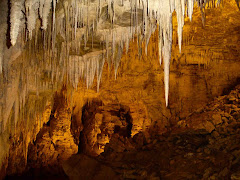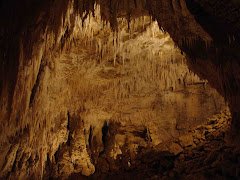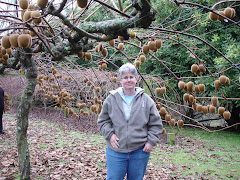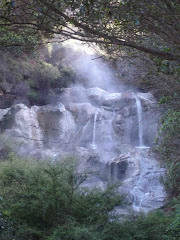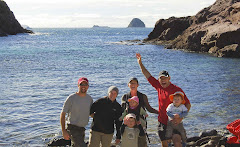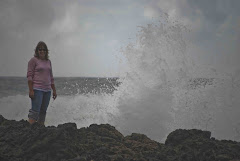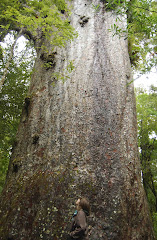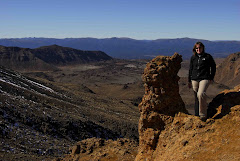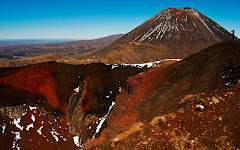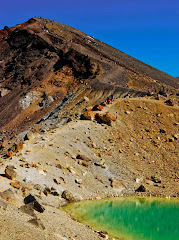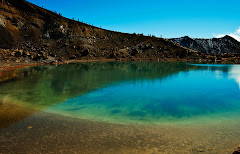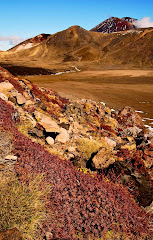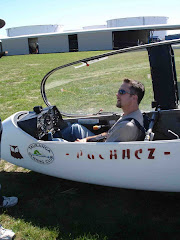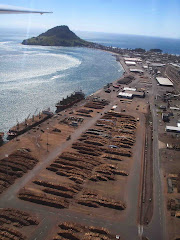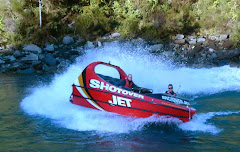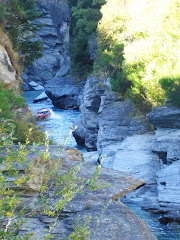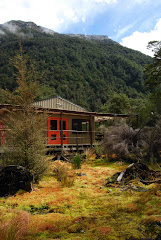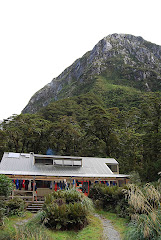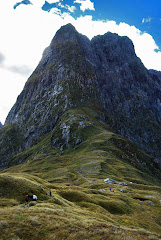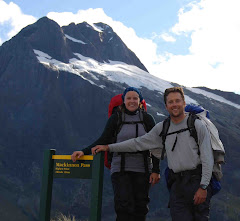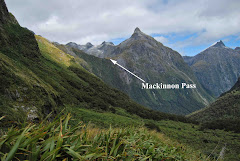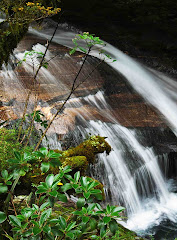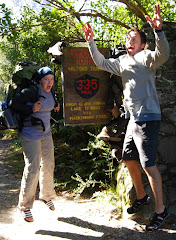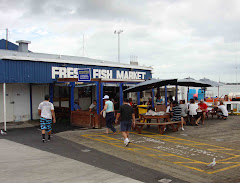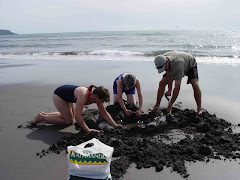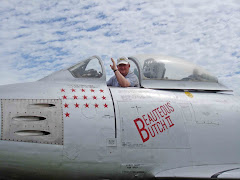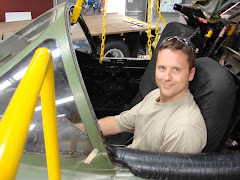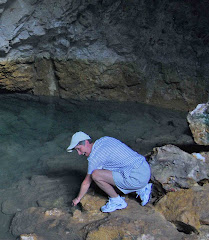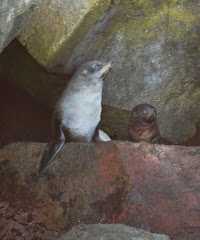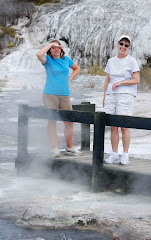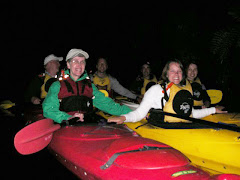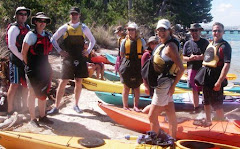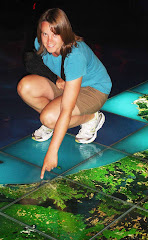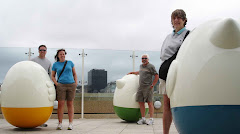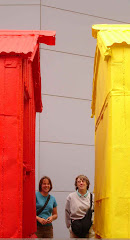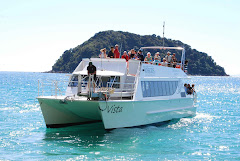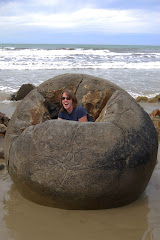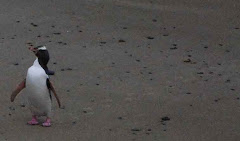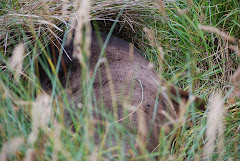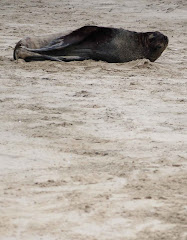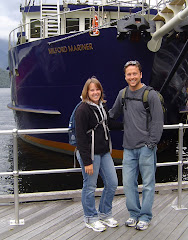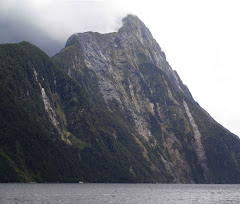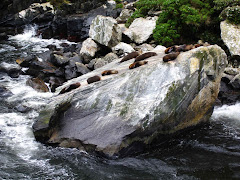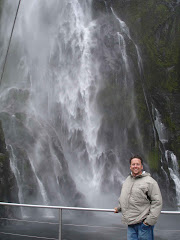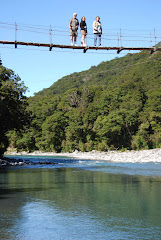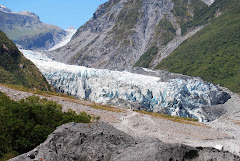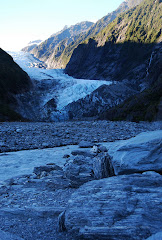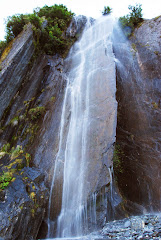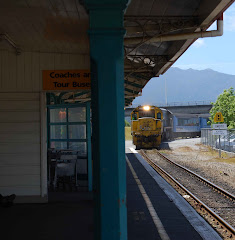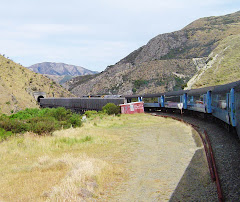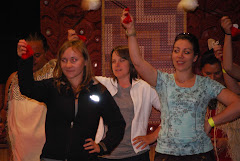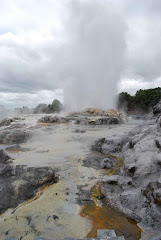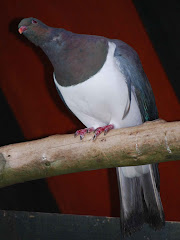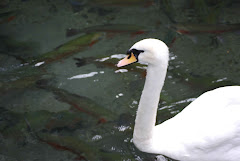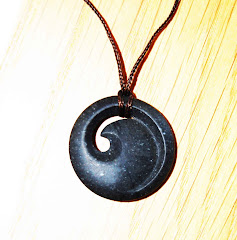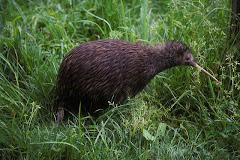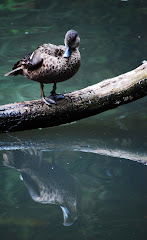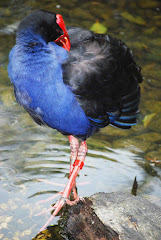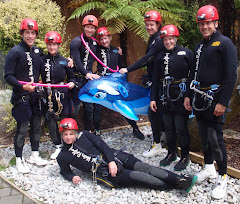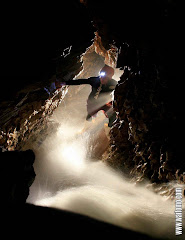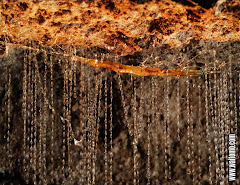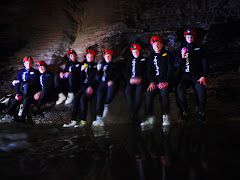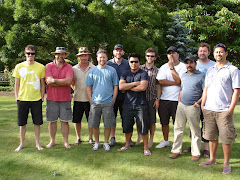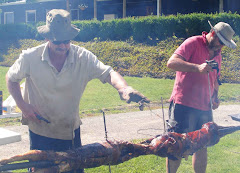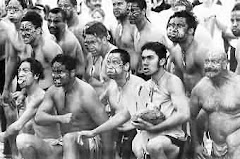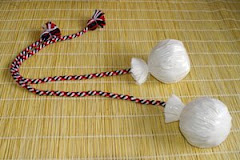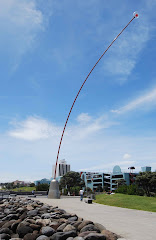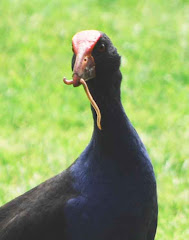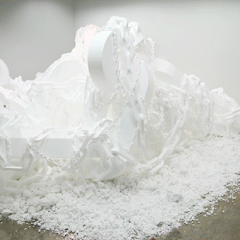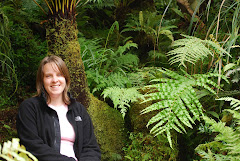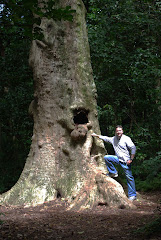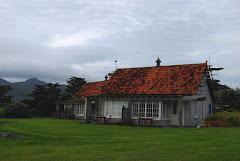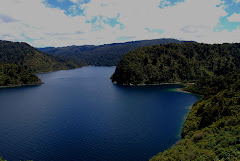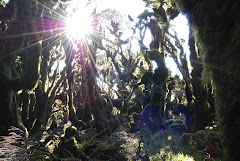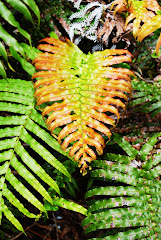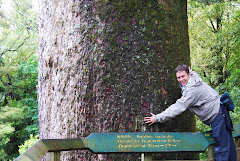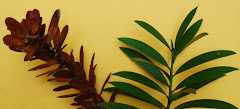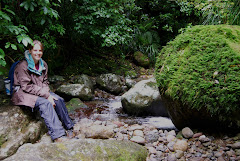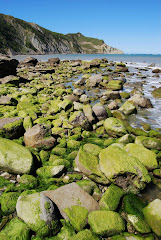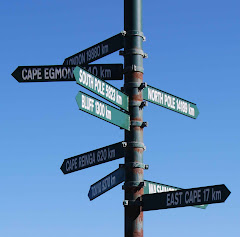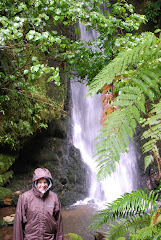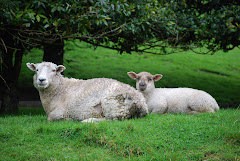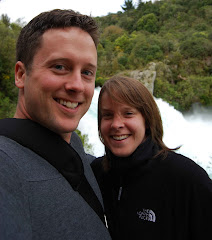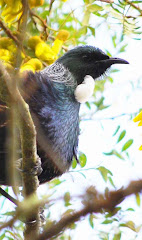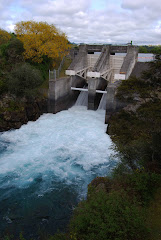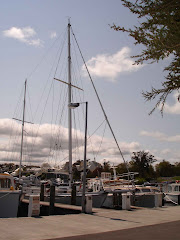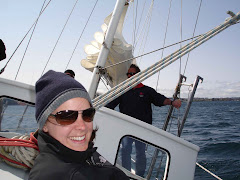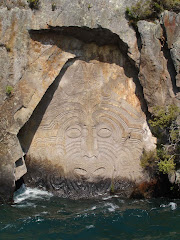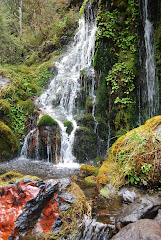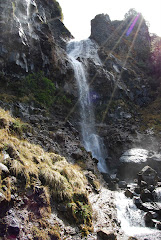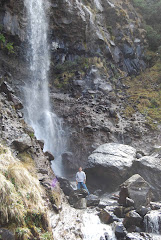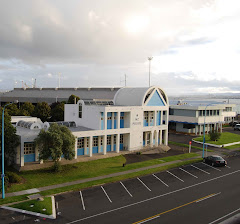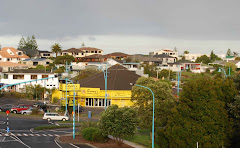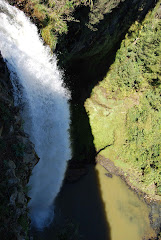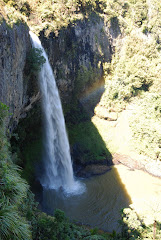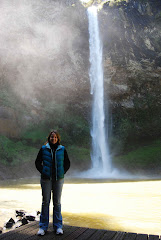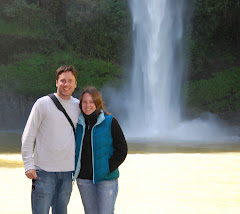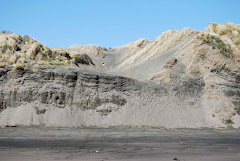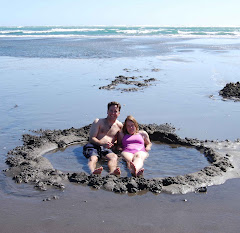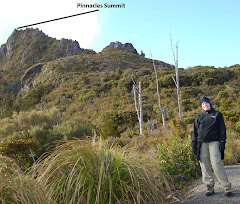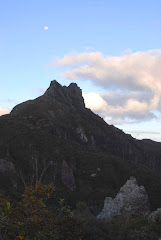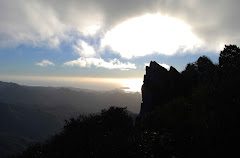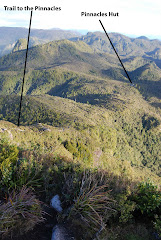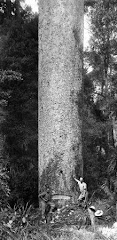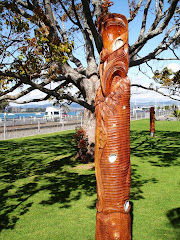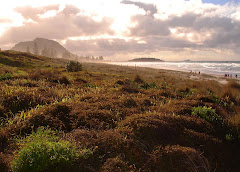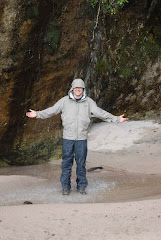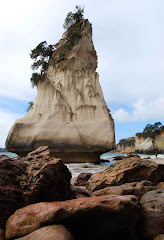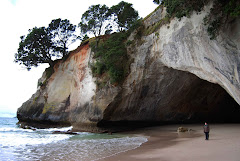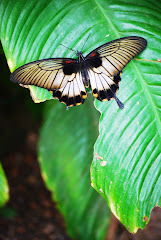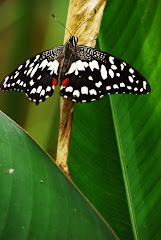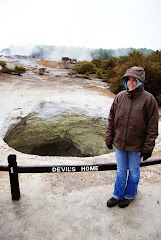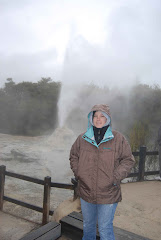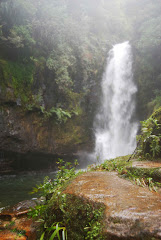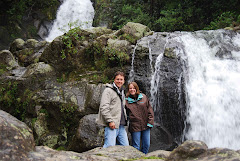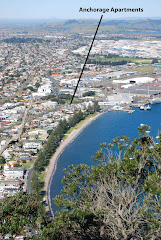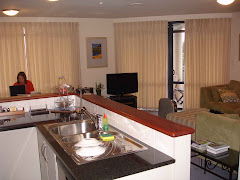This past weekend was Labour Day weekend, so Cory had Monday off. We decided to make it a long weekend, and so we both took Tuesday off as well. I don’t really know what Labour Day is a celebration of in New Zealand, but it was a nice 4 days! (I guess I can’t really provide details of Labor Day in the US, either – frightening, eh?)
For the long weekend, we accepted an invitation from some friends and headed down to Gisborne (rhymes with Lisbon, for you Iowans). Gizzy is on the east coast and is home to several wineries. This weekend was the Gisborne Food and Wine fest. It was a well-established festival, with organized transportation between three wineries and a “showgrounds” featuring several other wineries as well.
I’d expected an older crowd, holding their wine glasses by the stem, swirling and inspecting, while making comments like “it has an oak-y finish and very nice legs”. Luckily, the crowd was young, dressed in costume, carrying their wine glasses on a shoelace holder around their necks, and definitely not worried about the legs on their wine. I’m sure there were some true wine aficionados there, but they were outnumbered by the costume-wearing crowd.
But better than even a festival that involves lots of great wine and crazy people dancing were our gracious hosts, our friends’ parents. They kindly put us up, cooked great meals, doled out more great wine, and, in general, let us invade their family.
Their home was beautiful – probably a half dozen fireplaces; warm, sunny rooms; books to browse through everywhere; and, outdoors, citrus and avocado trees. I’m really not doing their home justice, but bear with me when I say it was a wonderful place to spend a weekend.
Cory and I also got a little bit of “faux-family time” – there were several little ones there and we got to roughhouse, read books, and hold babies. I wasn’t kidding when I said we really did invade their family; it was great.
On Monday, we headed back towards the Mount via the East Cape drive. Winding along the coast, the East Cape route showcases beautiful bays, long wharves, and warm beaches. It is sparsely populated with small towns along the way. It was a great, slow drive back to our work-week reality!
Friday, October 31, 2008
Wednesday, October 15, 2008
A Lake and Mountains
We spent this past weekend (the 11th and 12th) traveling south to Lake Taupo and the Tongariro mountains. I’m still amazed by the size of New Zealand and the geographical diversity they manage to pack in to such a small space!
We took a different route than we normally do when heading south out of the Tauranga region and, within an hour of home, were awed by the scenery. New Zealand is speckled with “scenic reserves” – which simply means an undeveloped section of land that will stay that way (at least for the time being). These areas aren’t really areas admired by locals or recommended by travel guide authors. And there are a lot of them. But, as are many other areas not designated, they are attractive.
Lake Taupo is the largest lake in New Zealand; it sits in the crater of a huge volcano. Apparently it is larger than the country of Singapore. Being poor at geography, that doesn’t actually help me put it in perspective, but you get the idea, at least – it is big.
My original plan was to rent a kayak and head out for a 4-hour paddle to see some carvings done by Maori artists. However, upon standing on the shore for closer to 4 minutes, while watching the white-capped waves and shivering against the wind, I quickly called that off. I’m a pansy, really. Instead, we opted to sign on for a little “tour”.
Tours are big in New Zealand – they seem to always include a vast multitude of photographic opportunities, a cheerful guide who may sideline as an amateur stand-up comic, the rental of some piece of equipment that comes with safety warnings, and, my favorite, a biscuit and tea.
Pleasingly, our Lake Taupo tour on the Barbary sailing yacht didn’t disappoint. The lake was blue, the mountains were awesome, the carvings were cool, the jokes were worthy, and the biscuit sweet. After receiving our complementary postcard of the Barbary (once owned by Errol Flyn), we headed south again.
The Tongariro mountains had been visible in Taupo, but we were hoping to get a little closer. There are three mountains, Tongariro, Ngauruhoe, and Ruapehu. (Fascinating fact: Ngauruhoe was featured in the Lord of the Rings series as Mount Doom.) At this time of year, the peaks are not accessible, except for the ski fields. But in summer, they are very popular, especially Tongariro, which has a popular hiking route. We settled for a short walk at the foot of Ruapehu.
We wrapped back up the other side of the range on our drive towards home. I got Cory to stop and get some panoramic photos of the three mountains; he even stood on the car to get a great shot – what a guy. Sometimes photography doesn’t do justice to the sight, but at least acts as a reminder. These shots are pretty awesome though.
We also managed to squeeze a walk around another thermal area. I know, you think we’d be tired of both waterfalls and thermal activity, but really, it just doesn’t get old!
We took a different route than we normally do when heading south out of the Tauranga region and, within an hour of home, were awed by the scenery. New Zealand is speckled with “scenic reserves” – which simply means an undeveloped section of land that will stay that way (at least for the time being). These areas aren’t really areas admired by locals or recommended by travel guide authors. And there are a lot of them. But, as are many other areas not designated, they are attractive.
Lake Taupo is the largest lake in New Zealand; it sits in the crater of a huge volcano. Apparently it is larger than the country of Singapore. Being poor at geography, that doesn’t actually help me put it in perspective, but you get the idea, at least – it is big.
My original plan was to rent a kayak and head out for a 4-hour paddle to see some carvings done by Maori artists. However, upon standing on the shore for closer to 4 minutes, while watching the white-capped waves and shivering against the wind, I quickly called that off. I’m a pansy, really. Instead, we opted to sign on for a little “tour”.
Tours are big in New Zealand – they seem to always include a vast multitude of photographic opportunities, a cheerful guide who may sideline as an amateur stand-up comic, the rental of some piece of equipment that comes with safety warnings, and, my favorite, a biscuit and tea.
Pleasingly, our Lake Taupo tour on the Barbary sailing yacht didn’t disappoint. The lake was blue, the mountains were awesome, the carvings were cool, the jokes were worthy, and the biscuit sweet. After receiving our complementary postcard of the Barbary (once owned by Errol Flyn), we headed south again.
The Tongariro mountains had been visible in Taupo, but we were hoping to get a little closer. There are three mountains, Tongariro, Ngauruhoe, and Ruapehu. (Fascinating fact: Ngauruhoe was featured in the Lord of the Rings series as Mount Doom.) At this time of year, the peaks are not accessible, except for the ski fields. But in summer, they are very popular, especially Tongariro, which has a popular hiking route. We settled for a short walk at the foot of Ruapehu.
We wrapped back up the other side of the range on our drive towards home. I got Cory to stop and get some panoramic photos of the three mountains; he even stood on the car to get a great shot – what a guy. Sometimes photography doesn’t do justice to the sight, but at least acts as a reminder. These shots are pretty awesome though.
We also managed to squeeze a walk around another thermal area. I know, you think we’d be tired of both waterfalls and thermal activity, but really, it just doesn’t get old!
Wednesday, October 8, 2008
Cory interjects
For those of you wondering if we felt the earthquake last Saturday, we did not. However, we will probably have another chance to feel one while we’re here. As you may already know New Zealand lies over the boundary between the Australian and Pacific tectonic plates. The collision of these plates has been occurring for over 25 million years and has resulted in many of the land masses that make New Zealand so breathtaking. Earthquakes are the natural byproduct of this process and there is no shortage here with roughly14,000 earthquakes recorded annually. Only about 100 of these are strong enough to be felt. This process along with the volcanic activity continues to change the face of New Zealand; in fact, every year Auckland moves about 5 cm east relative to Christchurch. While this may seem worrisome, to us it has been an adventure that we have never quite experienced before – hot sand beaches, dormant volcanoes, geysers, mud pools, etc.
What is somewhat worrisome, or maybe just eccentric, is my friend Allen. Allen is a man of many talents including biking, kayaking, skateboarding, etc. He was an integral part in our bike selection process, and he ridicules me whenever I back down on my previous claim of riding to work every day. While having lunch at his home this past weekend with his lovely wife Deb, daughter Nina, and new arrival Levi, Allen displayed his collection of homemade neckties. He constructed these during his 3rd and 4th years of medical school to try and make a buck. Designs range from the “animal pelt line” to those that may cause a seizure if worn in public. Supposedly he sold six for $30 a piece.
In addition to Allen’s bizarre talents, he also seems to have some bizarre beliefs about Americans, most of which have been gleaned from watching Southpark reruns. At our last evening out, Allen we quite keen to show me his gun collection. He reckoned that since every American owned a gun that I would love to see his collection. I suppose I do own two guns but that is beside the point. He also assumed that Americans walk around with our guns and say things like, “I’m gonna bust a cap into your ASS.” While owning a gun in the US is rather easy to do, gun ownership in New Zealand is an entirely different story. Below is a short summary (in bold) of the process that I copied from the web.
The starting point of gun ownership in New Zealand is to apply to the New Zealand Police for a firearms license. You are given a book to read about firearm safety, and required to attend a four hour orientation session at the local police station. A variety of long arms are shown and explained ("this is what a rifle looks like when it has been fired with dirt in the barrel") and a 30 question test is administered, based upon the information just presented. The passing score is 28 and if you miss any of the seven questions about basic principles of safety, you are not passed. Before you are granted the arms license (which looks like a driver's license including your picture) the arms officer visits your home and makes sure you have a secure place to house the guns. In the case of regular long-arms (rifles/shotguns) you would need a lockable cabinet or closet-- somewhere that the guns are out of sight and are not easily accessible. The ammunition must be stored in another lockable location. Aside from requiring references, those living in the house are interviewed to make sure that they are OK about having weapons in the house. If you pass all these requirements, you are then issued an "A" endorsed license (for a fee of $123.75 good for ten years). This license allows you to purchase both long arms and the ammunition for them.
To purchase pistols, you must meet a second set of criteria. First, you must join a pistol club that is a member of the New Zealand Pistol Association (Pistol New Zealand). You must shoot with that club at least 12 times in six months and take part in general club activity. Usually, you will be shooting with a pistol that is owned by the club and held by the club's armorer. After this six month period, the club can recommend to the police that you be allowed a "B" endorsement on your license. At which point, more references are required, your family is interviewed again, and background checks are made. You are required to store pistols in a "secure" strongroom or safe. A safe should be should be installed in a non-conspicuous place (like a closet), and must be made from a minimum of 6mm steel. The door must fit flush, and not be able to be pried off. It is lockable by a 5-lever deadbolt, or a hardened lock and hasp. The safe door must not be able to be opened if the hinges were to be removed. The safe is to be bolted to both the floor and wall, and the bolt-heads must be inside the safe. If the floor is on wooden joists, then the safe must span two joists and be bolted through a steel plate which exceeds the floor area of the safe. The safe is then inspected by the arms officer. All windows in the house are to be lockable. The main doors must have deadbolts. An alarm system is recommended. When all these requirements are met, the "B" endorsement is issued. Each additional endorsement requires a fee of $200 be paid. The endorsement remains in effect as along as you have a firearms license. To then purchase a pistol, you make the purchase at the gun store (showing your "B" license), and you get a receipt for the gun. You then take the receipt to your gun club and have the "pink slip" made out that certifies you are purchasing a gun to be used at the club. You then take the pink slip to the local police arms officer who issues a permit to purchase. You take this to the store, pick up the gun, and bring it back to the police who verify that all the serial numbers match. Then you take it home and put it in your safe. You can transport it (in a locked box) only to and from the range or to and from a gun dealer or gunsmith. You are allowed to have 12 working pistols on your "B" license. To maintain your "B" license you must shoot with the club a minimum of 12 times a year. There are 83 pistol clubs in NZ with a total of 2,350 members.
“Why would Allen need a rifle in New Zealand?” you might ask. Well, to shoot things. It seems that if it moves and you can’t eat it, shear it, or sell it, then it probably should be shot, at least on the South Island. In fact, we were horrified to find out about the annual Great Alexandra Easter Bunny Hunt held in Central Otago. In New Zealand, friendly bunnies like Scout and Radley (our previous pet rabbits) are not well liked. They tend to do what rabbits do – eat, dig, and reproduce. Without predatory species things get out of hand and whole crop fields can be destroyed in no time by thousands of rabbits. Here is where Allen and company come in. Each Easter, teams of 12 are allotted a block of land throughout the Central Otago region in which to hunt for a 24 hour period. Cash prizes and trophies are awarded for the most rabbits exterminated. In addition, special categories for the best equipped shooting vehicle are awarded. This year hunters shot 15,524 rabbits, 490 hares, seven possums, 44 stoats (like a weasel) and 13 ‘‘others'', which included turkeys and magpies. Shortly after hearing about the Easter bunny hunt, Allen told us about the wonderful pet rat he used to have. Things sure are different down here!
What is somewhat worrisome, or maybe just eccentric, is my friend Allen. Allen is a man of many talents including biking, kayaking, skateboarding, etc. He was an integral part in our bike selection process, and he ridicules me whenever I back down on my previous claim of riding to work every day. While having lunch at his home this past weekend with his lovely wife Deb, daughter Nina, and new arrival Levi, Allen displayed his collection of homemade neckties. He constructed these during his 3rd and 4th years of medical school to try and make a buck. Designs range from the “animal pelt line” to those that may cause a seizure if worn in public. Supposedly he sold six for $30 a piece.
In addition to Allen’s bizarre talents, he also seems to have some bizarre beliefs about Americans, most of which have been gleaned from watching Southpark reruns. At our last evening out, Allen we quite keen to show me his gun collection. He reckoned that since every American owned a gun that I would love to see his collection. I suppose I do own two guns but that is beside the point. He also assumed that Americans walk around with our guns and say things like, “I’m gonna bust a cap into your ASS.” While owning a gun in the US is rather easy to do, gun ownership in New Zealand is an entirely different story. Below is a short summary (in bold) of the process that I copied from the web.
The starting point of gun ownership in New Zealand is to apply to the New Zealand Police for a firearms license. You are given a book to read about firearm safety, and required to attend a four hour orientation session at the local police station. A variety of long arms are shown and explained ("this is what a rifle looks like when it has been fired with dirt in the barrel") and a 30 question test is administered, based upon the information just presented. The passing score is 28 and if you miss any of the seven questions about basic principles of safety, you are not passed. Before you are granted the arms license (which looks like a driver's license including your picture) the arms officer visits your home and makes sure you have a secure place to house the guns. In the case of regular long-arms (rifles/shotguns) you would need a lockable cabinet or closet-- somewhere that the guns are out of sight and are not easily accessible. The ammunition must be stored in another lockable location. Aside from requiring references, those living in the house are interviewed to make sure that they are OK about having weapons in the house. If you pass all these requirements, you are then issued an "A" endorsed license (for a fee of $123.75 good for ten years). This license allows you to purchase both long arms and the ammunition for them.
To purchase pistols, you must meet a second set of criteria. First, you must join a pistol club that is a member of the New Zealand Pistol Association (Pistol New Zealand). You must shoot with that club at least 12 times in six months and take part in general club activity. Usually, you will be shooting with a pistol that is owned by the club and held by the club's armorer. After this six month period, the club can recommend to the police that you be allowed a "B" endorsement on your license. At which point, more references are required, your family is interviewed again, and background checks are made. You are required to store pistols in a "secure" strongroom or safe. A safe should be should be installed in a non-conspicuous place (like a closet), and must be made from a minimum of 6mm steel. The door must fit flush, and not be able to be pried off. It is lockable by a 5-lever deadbolt, or a hardened lock and hasp. The safe door must not be able to be opened if the hinges were to be removed. The safe is to be bolted to both the floor and wall, and the bolt-heads must be inside the safe. If the floor is on wooden joists, then the safe must span two joists and be bolted through a steel plate which exceeds the floor area of the safe. The safe is then inspected by the arms officer. All windows in the house are to be lockable. The main doors must have deadbolts. An alarm system is recommended. When all these requirements are met, the "B" endorsement is issued. Each additional endorsement requires a fee of $200 be paid. The endorsement remains in effect as along as you have a firearms license. To then purchase a pistol, you make the purchase at the gun store (showing your "B" license), and you get a receipt for the gun. You then take the receipt to your gun club and have the "pink slip" made out that certifies you are purchasing a gun to be used at the club. You then take the pink slip to the local police arms officer who issues a permit to purchase. You take this to the store, pick up the gun, and bring it back to the police who verify that all the serial numbers match. Then you take it home and put it in your safe. You can transport it (in a locked box) only to and from the range or to and from a gun dealer or gunsmith. You are allowed to have 12 working pistols on your "B" license. To maintain your "B" license you must shoot with the club a minimum of 12 times a year. There are 83 pistol clubs in NZ with a total of 2,350 members.
“Why would Allen need a rifle in New Zealand?” you might ask. Well, to shoot things. It seems that if it moves and you can’t eat it, shear it, or sell it, then it probably should be shot, at least on the South Island. In fact, we were horrified to find out about the annual Great Alexandra Easter Bunny Hunt held in Central Otago. In New Zealand, friendly bunnies like Scout and Radley (our previous pet rabbits) are not well liked. They tend to do what rabbits do – eat, dig, and reproduce. Without predatory species things get out of hand and whole crop fields can be destroyed in no time by thousands of rabbits. Here is where Allen and company come in. Each Easter, teams of 12 are allotted a block of land throughout the Central Otago region in which to hunt for a 24 hour period. Cash prizes and trophies are awarded for the most rabbits exterminated. In addition, special categories for the best equipped shooting vehicle are awarded. This year hunters shot 15,524 rabbits, 490 hares, seven possums, 44 stoats (like a weasel) and 13 ‘‘others'', which included turkeys and magpies. Shortly after hearing about the Easter bunny hunt, Allen told us about the wonderful pet rat he used to have. Things sure are different down here!
Tuesday, October 7, 2008
Scenes from "home"...
Our apartment is on the southeast corner of the building, and the outer walls have many windows, affording sights that have quickly come to be images of “home” for us here.
The east windows overlook Victoria Road and another apartment building – not too exciting. To the south east, you see one of the main roundabouts in the Mount, always good for some excitement. It includes two zebra crossings which adds additional drama. Maunganui Road is the main street through town, and the majority of cafes and boutiques sit two blocks from our roundabout. It is a busy area, but the roundabout moves fairly efficiently.
Just beyond the roundabout is Sunny's Variety Shop. As you might imagine someplace named Sunny's would be, it is painted a brilliant yellow. If you've spend much time in Paul's Discount in Iowa City, you'd be reminded of home. Upon entering, you'd notice how vast and incomprehensible their selection of goods is. There are somewhat out-dated posters, fish bait and tackle boxes, an array of personal grooming items, Asian food, lawn fertilizer... The list goes on (and on).
Opposite from Sunny's is, sadly, a Burger King. We've not visited it yet and sincerly hope not to - it's not the cheeriest reminder of the US.
To the south of our apartment, along Salisbury Road, are a number of sights. Coronation Park is a green space in a city block that abuts the Mount Maunganui Bowling Club grounds (complete with bowling club flag). The park is a small but quaint (there’s really no other appropriate word; maybe “twee”) with a man-made waterfall, small curving walkways, and grassy areas. Some weekends a few artists (though perhaps that is too strong a label) set out their paintings on the corner by the roundabout. I’m not sure they are ringing up too many sales, but it seems to make for good socializing.
The Bowling Club offers hours of visual delight. Lawn bowling appears to be somewhat like bocce, but on a level, well-kept grass playing surface. They roll balls that have been weighted so as to be off-balance towards a target ball. See Wikipedia for more details if you so desire; I’ve read about it, but I think I’ll need to play sometime to get the hang of it. While it is open to the general public, the club members are my favorite. On competition day, they wear all-white, with opponents wearing a color (perhaps in a vest or hat) that represents their home club. It appears to be mostly older men, but my vision isn’t that great, so don’t quote me.
Just down from the Bowling Club, in case things get a bit rowdy, is the New Zealand Police. Because NZ is so small, they don’t have regional or local police, simply a national policing unit. I went to get fingerprints taken for my teaching license (I had to send them off to the FBI); they seemed a very friendly group. Occasionally, you’ll hear the sirens and see them speeding towards the traffic round – that is always fun to watch them navigate that, especially in traffic!
Following along the road, and viewed to the southwest of our apartment, is the Port of Tauranga and the Salisbury Wharf. The Port stretches south along the peninsula until it reaches Tauranga. Huge ships, stacked high with giant containers, sail out of the port. The majority of their exports go to Asia and include forest products and agricultural products. (For more fascinating facts, you can check out the Port’s website.)
The wharf is where the ferry between Tauranga and the Mount operates in the summer. It is also a popular place from which to fish, though after long observation, there didn’t appear to be much action. Then again, I’m not much of a fisher, and I’m not known for my patience, so maybe I just didn’t wait long enough.
If you face your chair on the balcony in that direction, you can glimpse Pilot's Bay. I imagine it is as close as we'll ever get to living on the ocean, so we'll call that "glimpse" our "view"!
The east windows overlook Victoria Road and another apartment building – not too exciting. To the south east, you see one of the main roundabouts in the Mount, always good for some excitement. It includes two zebra crossings which adds additional drama. Maunganui Road is the main street through town, and the majority of cafes and boutiques sit two blocks from our roundabout. It is a busy area, but the roundabout moves fairly efficiently.
Just beyond the roundabout is Sunny's Variety Shop. As you might imagine someplace named Sunny's would be, it is painted a brilliant yellow. If you've spend much time in Paul's Discount in Iowa City, you'd be reminded of home. Upon entering, you'd notice how vast and incomprehensible their selection of goods is. There are somewhat out-dated posters, fish bait and tackle boxes, an array of personal grooming items, Asian food, lawn fertilizer... The list goes on (and on).
Opposite from Sunny's is, sadly, a Burger King. We've not visited it yet and sincerly hope not to - it's not the cheeriest reminder of the US.
To the south of our apartment, along Salisbury Road, are a number of sights. Coronation Park is a green space in a city block that abuts the Mount Maunganui Bowling Club grounds (complete with bowling club flag). The park is a small but quaint (there’s really no other appropriate word; maybe “twee”) with a man-made waterfall, small curving walkways, and grassy areas. Some weekends a few artists (though perhaps that is too strong a label) set out their paintings on the corner by the roundabout. I’m not sure they are ringing up too many sales, but it seems to make for good socializing.
The Bowling Club offers hours of visual delight. Lawn bowling appears to be somewhat like bocce, but on a level, well-kept grass playing surface. They roll balls that have been weighted so as to be off-balance towards a target ball. See Wikipedia for more details if you so desire; I’ve read about it, but I think I’ll need to play sometime to get the hang of it. While it is open to the general public, the club members are my favorite. On competition day, they wear all-white, with opponents wearing a color (perhaps in a vest or hat) that represents their home club. It appears to be mostly older men, but my vision isn’t that great, so don’t quote me.
Just down from the Bowling Club, in case things get a bit rowdy, is the New Zealand Police. Because NZ is so small, they don’t have regional or local police, simply a national policing unit. I went to get fingerprints taken for my teaching license (I had to send them off to the FBI); they seemed a very friendly group. Occasionally, you’ll hear the sirens and see them speeding towards the traffic round – that is always fun to watch them navigate that, especially in traffic!
Following along the road, and viewed to the southwest of our apartment, is the Port of Tauranga and the Salisbury Wharf. The Port stretches south along the peninsula until it reaches Tauranga. Huge ships, stacked high with giant containers, sail out of the port. The majority of their exports go to Asia and include forest products and agricultural products. (For more fascinating facts, you can check out the Port’s website.)
The wharf is where the ferry between Tauranga and the Mount operates in the summer. It is also a popular place from which to fish, though after long observation, there didn’t appear to be much action. Then again, I’m not much of a fisher, and I’m not known for my patience, so maybe I just didn’t wait long enough.
If you face your chair on the balcony in that direction, you can glimpse Pilot's Bay. I imagine it is as close as we'll ever get to living on the ocean, so we'll call that "glimpse" our "view"!
Subscribe to:
Comments (Atom)
